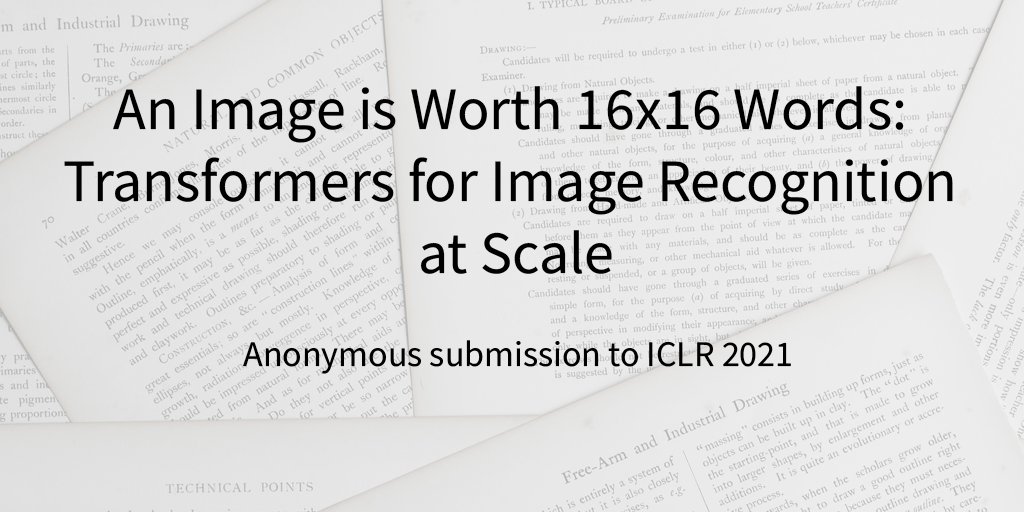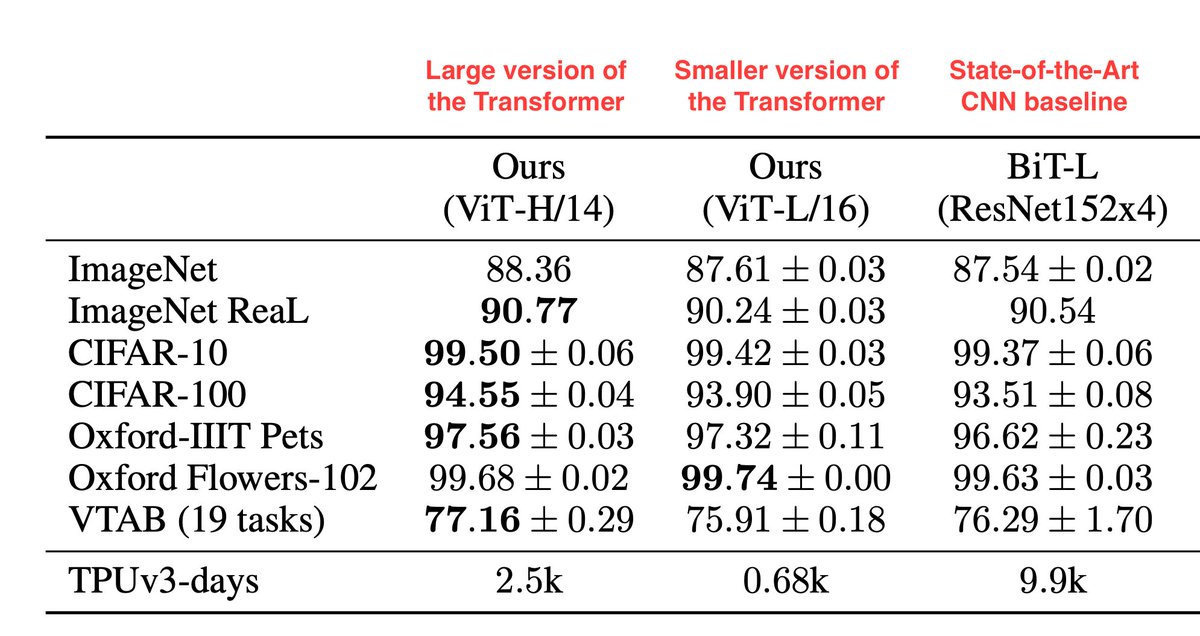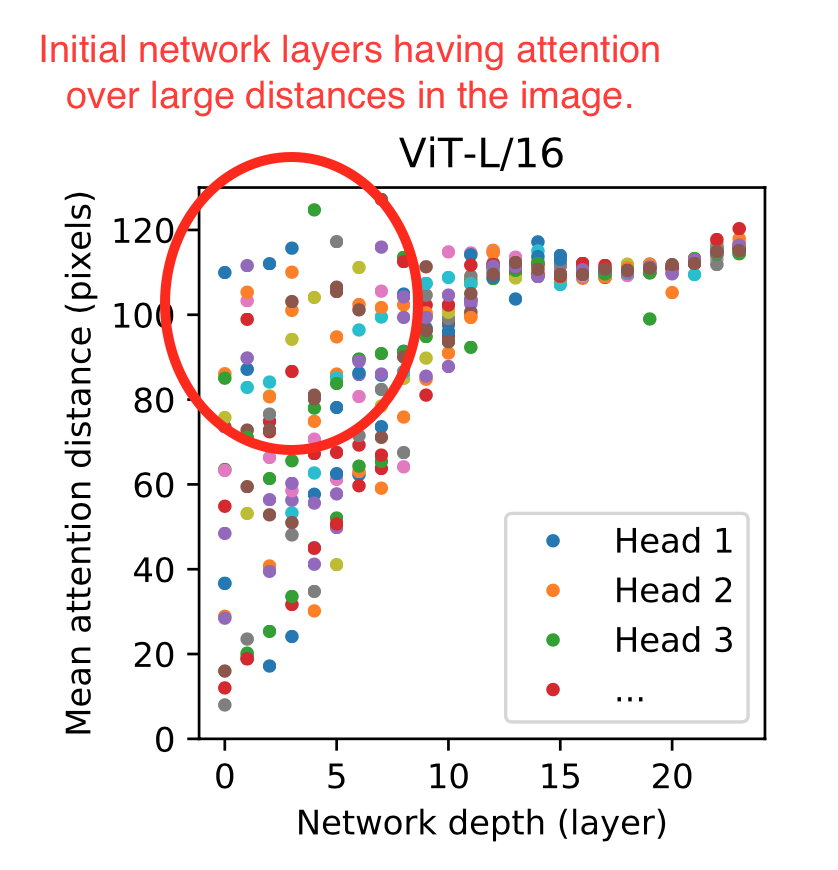Another paper review, but a little different this time... 
The paper is not published yet, but is submitted for review at ICLR 2021. It is getting a lot of attention from the CV/ML community, though, and many speculate that it is the end of CNNs...
https://twitter.com/OriolVinyalsML/status/1312404990871375873?s=20

The paper is not published yet, but is submitted for review at ICLR 2021. It is getting a lot of attention from the CV/ML community, though, and many speculate that it is the end of CNNs...

https://twitter.com/OriolVinyalsML/status/1312404990871375873?s=20
The paper successfully applies the Transformer deep learning model to the image classification problem.
Transformers are dominating the field of natural language processing, just look at GPT-3...
However, they have found only limited application in Computer Vision so far...
Transformers are dominating the field of natural language processing, just look at GPT-3...
However, they have found only limited application in Computer Vision so far...
Image as input 
Transformers take a series of tokens as input - usually the words of a sentence. But what about images?
Treating each pixel as a token would be too computationally expensive
Taking only a local neighborhood of a pixel will only provide local context

Transformers take a series of tokens as input - usually the words of a sentence. But what about images?

Treating each pixel as a token would be too computationally expensive

Taking only a local neighborhood of a pixel will only provide local context

Here, the image is split into patches of 16x16 pixels, which are fed in the Transformer (more accurately a linear transformation of the patch + positional information).
This allows this so called Vision Transformer (ViT) to capture global context, while still being effiecient.
This allows this so called Vision Transformer (ViT) to capture global context, while still being effiecient.
Model 
What's interesting is that the network itself is a standard Transformer, exactly as used for NLP!
It takes as input the sequence of image patches and outputs a classification, which is the Transformer's output for the special [class] token, as done in other models

What's interesting is that the network itself is a standard Transformer, exactly as used for NLP!

It takes as input the sequence of image patches and outputs a classification, which is the Transformer's output for the special [class] token, as done in other models
Results 
Results are impressive! Evaluated on 7 different datasets, ViT achieves results comparable to the state-of-the-art CNN with 15x less computational resources. A deeper version of ViT outperforms the CNN, while still being 4x faster.
It needs 2500 TPU days, though...

Results are impressive! Evaluated on 7 different datasets, ViT achieves results comparable to the state-of-the-art CNN with 15x less computational resources. A deeper version of ViT outperforms the CNN, while still being 4x faster.
It needs 2500 TPU days, though...
Analysis 
Looking at the learned linear transformation of the input patches, we can see that they resemble the first layer of a CNN. The Transformer learned to capture frequency and color information, without any convolutions. This speaks for its good generalization ability!

Looking at the learned linear transformation of the input patches, we can see that they resemble the first layer of a CNN. The Transformer learned to capture frequency and color information, without any convolutions. This speaks for its good generalization ability!
Analysis 

Even in the first layers, ViT learns to pay attention to almost the whole image and not only to a local neighborhood of each pixel. This is something that CNNs can only do in the deeper layers - in the beginning the receptive fields of the neurons are limited.


Even in the first layers, ViT learns to pay attention to almost the whole image and not only to a local neighborhood of each pixel. This is something that CNNs can only do in the deeper layers - in the beginning the receptive fields of the neurons are limited.
Analysis 


The authors also tried using features from the initial layers of a CNN as input to the Transformer instead of the patches. While this showed better results for smaller models, a deeper version of ViT was able to generalize just as good using the images directly.



The authors also tried using features from the initial layers of a CNN as input to the Transformer instead of the patches. While this showed better results for smaller models, a deeper version of ViT was able to generalize just as good using the images directly.
Conclusion 
It is impressive that a very general model (Transformer) is able to outperform a more specialized one (CNN), while being more efficient.
The authors note, though, that this is only possible when training on huge amount of data - 300M images (the JFT-300M dataset).

It is impressive that a very general model (Transformer) is able to outperform a more specialized one (CNN), while being more efficient.
The authors note, though, that this is only possible when training on huge amount of data - 300M images (the JFT-300M dataset).
Considering that JFT-300M is a non-public dataset by Google and that it takes 2500 TPUv3 days to train the model, it will not be easy to apply it in practice...
However, this work shows the potential of Transformers for CV and I bet there will be more usable versions soon...
However, this work shows the potential of Transformers for CV and I bet there will be more usable versions soon...

Further reading 
 Full text of the paper: https://openreview.net/forum?id=YicbFdNTTy
Full text of the paper: https://openreview.net/forum?id=YicbFdNTTy
 Very good video with explanation by @ykilcher - https://twitter.com/ykilcher/status/1312718227953405952?s=20
Very good video with explanation by @ykilcher - https://twitter.com/ykilcher/status/1312718227953405952?s=20
 General information about Transformers in this thread by @AlejandroPiad: https://twitter.com/AlejandroPiad/status/1310933302384168961?s=20
General information about Transformers in this thread by @AlejandroPiad: https://twitter.com/AlejandroPiad/status/1310933302384168961?s=20

 Full text of the paper: https://openreview.net/forum?id=YicbFdNTTy
Full text of the paper: https://openreview.net/forum?id=YicbFdNTTy Very good video with explanation by @ykilcher - https://twitter.com/ykilcher/status/1312718227953405952?s=20
Very good video with explanation by @ykilcher - https://twitter.com/ykilcher/status/1312718227953405952?s=20 General information about Transformers in this thread by @AlejandroPiad: https://twitter.com/AlejandroPiad/status/1310933302384168961?s=20
General information about Transformers in this thread by @AlejandroPiad: https://twitter.com/AlejandroPiad/status/1310933302384168961?s=20

 Read on Twitter
Read on Twitter

![Model What's interesting is that the network itself is a standard Transformer, exactly as used for NLP! It takes as input the sequence of image patches and outputs a classification, which is the Transformer's output for the special [class] token, as done in other models Model What's interesting is that the network itself is a standard Transformer, exactly as used for NLP! It takes as input the sequence of image patches and outputs a classification, which is the Transformer's output for the special [class] token, as done in other models](https://pbs.twimg.com/media/EjlbNO8WkAA7vNo.jpg)





